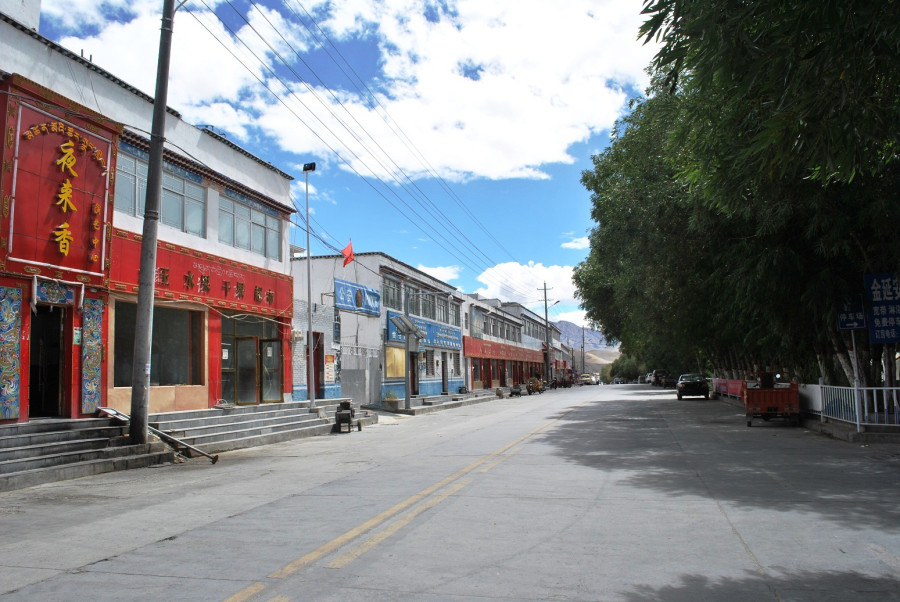Money
Nepalis lose livelihoods after China closes border due to Covid-19
The closure has affected Nepali traders and hundreds of seasonal workers from Bajhang, Humla, Dolpa, Darchula and Mugu districts.
Basant Pratap Singh
If things had been normal, Karsang and her husband Anga Thapa of Talkot village in Bajhang would be busy serving guests in their hotel at this time of the year.
The couple from Sudurpaschim province in far western Nepal own a hotel in Taklakot, Tibet, 30 km across the international border.
Taklakot or Purang is the first city in Tibet travellers encounter after leaving Nepal. Located at an altitude of 4,755 metres, it is popular among Indian pilgrims going on the holy journey known as Kailash Manasarovar Yatra for acclimatising for one or two days.
It is also the time of the year when people from Humla used to hop across the border to Taklakot to work as seasonal labourers. They earned up to Rs350,000 in three months.
The Thapa couple normally travel down to Nepalgunj in March to buy pulses, rice and spices for their hotel. They would be back in Taklakot with the provisions by mid-April.
The Kailash Manasarovar Yatra season begins in May and lasts till September. The arrival of Indian pilgrims and Nepali workers would keep hoteliers like Thapa busy for months.
“I used to make a profit of around Rs1.5 million during the pilgrim season,” said Thapa. The couple saved enough to even buy a house in Surkhet. They normally return to Nepal after it starts snowing in mid-October.
“After 10 years, I was forced to shutter my hotel because of Covid-19,” said Thapa. They arrived in Nepal in mid-November 2019 and have not been able to return after Chinese authorities closed the border in January 2020 to prevent the spread of the coronavirus.
It’s been nearly one and a half years since the pandemic began, and the situation has not changed. The Thapas are wondering when Taklakot will reopen.
Before Covid-19, more than 20,000 pilgrims were visiting the sacred mountain and lake during the spring season, according to tour operators.
The Nepalgunj-Simikot-Hilsa-Mansarovar route is the shortest for Indian visitors, and the itinerary is affordable and easy.
Travellers usually fly from Nepalgunj to Simikot by fixed-wing aircraft and then take a helicopter to Hilsa on the border with Tibet, China.
As Nepalgunj has become a major gateway, more than a dozen luxury hotels have sprung up to cater to Indian visitors.
After crossing Karnali, pilgrims are taken by motor vehicle to China. Due to the high altitude, pilgrims acclimatise for one to two days in Taklakot. Lake Manasarovar lies at an elevation of 4,556 metres.
The Thapas are facing a financial crisis due to the prolonged closure of their hotel. “We have admitted our three children in a boarding school in Surkhet. We have to pay Rs40,000 in school fees monthly,” Anga said.
With the hotel closed, their revenues dried up; and they were forced to mortgage their house to raise cash for household expenses and school fees. “Our income is almost zero.”
But the Nepal-China border is not reopening anytime soon. Thapa says he has paid more than Rs600,000 as rent for the hotel in Taklakot, and the landlord has been reminding him repeatedly to settle the dues. "If the border does not reopen this year too, I will be ruined.”
The closure of the border in early 2020 has affected a large number of Nepali entrepreneurs and seasonal workers from Bajhang, Humla, Dolpa, Darchula and Mugu.
High wages are the major reason why youths like to go to the Tibetan market to work. The money they make in Taklakot is enough to meet their expenses for the entire year. They earn 100 to 200 yuan (Rs1,800 to Rs3,600) per day working as a labourer.
Nepalis have been running hotels and selling Nepali products, wooden utensils, handicrafts, Nepali carpets, bamboo, reeds, leather and other handicraft items for many years in Taklakot.
Honey, ghee, hard cheese, chilli, pepper and herbs besides agricultural goods produced in Nepal are also traded.
Dan Bahadur Lama, a wooden utensil trader from Namkha Rural Municipality in Humla, said they have a turnover of more than Rs2 billion annually.
People from Mugu, Humla and Bajhang have opened more than 40 shops in and around Taklakot to sell wooden utensils. "All the shops are closed and business is dead," he said.
“We all are in trouble. Wooden utensils made last year for the Taklakot market are piled up in Surkhet and Humla," Lama said.
Wooden utensils are considered to be auspicious items and are used during birth, death and wedding ceremonies and also in daily life.
Making utensils out of the wood found in various forests of Nepal is the main occupation of the Tamang community in Humla and Bajhang.
People here have been engaged in making wooden utensils for a long time, but it was not easy to sell them till a few years ago. Business started booming after 2015 when the Nepal government removed export duty .
Sonam Lama, a wooden utensil trader from Humla, said they spend Rs20,000 to Rs30,000 to prepare one wooden utensil. They can sell it for Rs50,000 to Rs1.5 million in Taklakot, depending on the size and quality.
"Many people have started trading wooden utensils in recent years due to the high return," he said. Demand for wooden utensils was picking up well until Covid-19 came and ruined everything, she said.
More than 300 Nepali traders are engaged in the small markets of Tibet, including Khocher, Lukot and Lukpul.
Thoten Lama of Namkha Rural Municipality of Humla said that most of the Nepali traders went bankrupt after they lost their businesses. They are still not allowed to enter Tibet.
Hundreds of seasonal workers from Bajhang, Humla, Dolpa, Darchula and Mugu districts who used to work in construction, agriculture and other sectors in Taklakot are out of work.
Nepali workers used to harvest and thresh the crops grown in the highlands of Tibet and work in sheep and goat farms.
“Everything stopped after Covid-19,” said Kinthya Rokaya of Saipal Rural Municipality in Bajhang.
He said seasonal workers in Tibet earn from 150 to 250 Chinese yuan (Rs2,550 to 4,000) daily. Demand for workers increases during the period April to August before the winter sets in.
Nepali workers normally bring home around Rs500,000 per person, after deducting their living expenses.
"Taklakot was like South Korea and Dubai for us. After working in Taklakot for four or five months, we could live on the earnings for a whole year," Rokaya said.
The Chinese government is investing heavily in building state-of-the-art infrastructure in Taklakot, and it has become an attractive destination for Nepali job seekers.
Jayabhakta Shahi of Humla said that around 3,000 people from the border districts travel to Taklakot for seasonal employment every year. The local administration of Tibet was giving them three-month work permits and renewing them for another three months.
"Taklakot is many times better for them than the Gulf countries as they earn good money and can return home whenever they want," said Gopi Singh of Humla, Syada. "Six months' wages were enough to pay for the family needs for one year," he said. "But everything is closed now," he said.
Even though Nepali traders have been barred from entering Taklakot, trade activities are still going on there.
The Kerung and Tatopani border points have been opened, but there has been no initiative from the government to open Taklakot, Nepali traders said.
"The government has ignored this border point despite being linked to the livelihoods of many people in the five districts,” said Yogesh Bohara of Chhangru, Darchula, who has been trading curio goods in Taklakot.
He said that a diplomatic initiative should be launched to reopen the border soon. "If the border is not reopened this year too, many people will be ruined," he said.




 5.4°C Kathmandu
5.4°C Kathmandu













%20(1).jpg&w=300&height=200)
